old roses vs. modern reproductions
noseometer...(7A, SZ10, Albuquerque)
8 years ago
Featured Answer
Sort by:Oldest
Comments (61)
Leigh Wilson Versaggi Architecture
8 years agonoseometer...(7A, SZ10, Albuquerque) thanked Leigh Wilson Versaggi ArchitectureRelated Discussions
What is your favorite red Old Garden Rose?
Comments (54)I'd like to put in a good word for Tradescant. Not sure if I can say it's my favorite, but I wouldn't be without it. I can't seem to figure out how to post pics, but I know Patrick (my enabler on that one) has some incredible pics of it that might be nice to add to this thread. General Jacqueminot might actually be my fave - at any rate, every time I see it I say that. Trouble is, it is very prone to BS. But, oh, the perfection of color (whitish-bluish blush backing) and nodding, full blooms... Celeste - love your pic of General Washington. It has long been on my wish list, but I have hesitated to get it, since so many HPs have disease problems and (to me) awkward plant habits. Is it a lot of trouble?... Souv. du Dr. Jamain is the second most remarked upon rose in my garden the first being Jude the Obscure). Smoldering, saturated, and trouble-free. I call it my Dr. Huey substitute. Am I the only one who actually really likes the old doctor? They are in bloom all around town right now, and I can't go anywhere in the car without taking long detours just to see them all. I know they'll look like hell in a few weeks, after bloom, but gosh, so will some of my HPs! :) Call me a simpleton, but Dr. Huey was actually the rose responsible for my interest in old roses. Since childhood I loved that mysterious, arching old rose that graced so many of the older houses around here. If I could only have one, I thought... Well, when I grew up and moved back to my small hometown, I went searching on the web for that old thing. Couldn't find it anywhere. But, I found lots of other gorgeous, smelly old roses and lovely specialty nurseries and this wonderful, helpful forum. And it was here that I finally learned the identity of my first rose obsession. And nobody likes it. Why? I still don't have one (nearly acquired one a couple of weeks ago, but that's another long story...), but sometimes when I drive about town, looking at all the spectacular Dr. Hueys, I think just for a moment that maybe my grand, elaborate rose show is still not the equal of a single mature specimen of the reviled old doctor. Am I just crazy? Over-romanticizing my first rose love? Or are there others who appreciate this rose too? With humble pleas for tolerance of my heretical views, robiniaquest (or should it be Dr. Hueyquest?)...See MoreThe attractions of old roses
Comments (35)What a fantastic post----I should be in bed but I'm sitting here looking at pictures of these fantastic old roses---I remember about 40 years ago when I first got into roses---I only liked the so-called "real roses"---and then I found GW and learned to appreciate the old gorgeous blooms--- Speaking of wonderful stories ---Last year I was finally able to get Ghislaine de Felgonde-----named for a lady who rescued her DH from no-mans land during WW1----no one else would rescue him so she borrowed a horse and got him out safely---A rose hybrydiser (sp) was so impressed he named this rose after her.I have blooms this year and she is wonderful. And of course Zephirine Drouhin-----from the Civil War era. Randy and Carol and Patrick-and the rest-----I love your reasons for loving OGR's. Florence...See MoreShurb Rose VS Hybird Tea Rose
Comments (83)I think the whole problem here is that we are trying to compare apples to oranges. HT's and Shrub roses are two different classes for a reason. If you are expecting HTs to grow and bloom in the same manner as Shrub roses then you surely will be disappointed. Same is true the other way around. If you are expecting Shrub roses to give you the large beautifully formed blooms of an HT you'll be disappointed too. You can not compare them to each other. That's unfair to both classes. In my experience if you try to even compare one HT against another you come up perplexed. EVERY variety of rose is DIFFERENT. They each have their own habits and no two are alike. You need to just enjoy and appreciate each one for it's own unique characteristics....See MoreOpinions,OK to mix old and new roses?
Comments (27)My take-away from the "don't mix modern with old or English" was that the two are often treated differently, and look better separated. Many people treat HTs and Floribundas as bedding plants -- hard-pruning them every year, planting in groups of the same variety for emphasis. The old and English roses are more often left to grow a bit more wild. In habit, they don't match. BUT....not everyone treats their HTs and Floribundas as "bedding plants", so it's not so much "don't mix the types" as it is "don't mix the gardening styles in the same bed." In other words, "neat and clipped" roses might look odd right next to "arching and billowing" roses. At least, that's how I took it. But, in the end, it's all about personal preferences. The other consideration is color clashing between some of the brighter colored moderns and the softer colored old and English roses. But that isn't something inherent -- there are plenty of non-harsh moderns that will blend well with the old and English roses. Ultimately, I realize that Austin's books, while very informative, are also aiming to nudge favor toward his own roses and preferences. He had to carve out a new market for the roses he bred, after all. :-) ~Christopher...See Morenikthegreek
8 years agolast modified: 8 years agonoseometer...(7A, SZ10, Albuquerque) thanked nikthegreekLavender Lass
8 years agolast modified: 8 years agonoseometer...(7A, SZ10, Albuquerque) thanked Lavender Lassnoseometer...(7A, SZ10, Albuquerque)
8 years agoseil zone 6b MI
8 years agoLeigh Wilson Versaggi Architecture
8 years agoUser
8 years agolast modified: 8 years agoUser
8 years agoingrid_vc so. CA zone 9
8 years agolast modified: 8 years agoodinthor
8 years agoLeigh Wilson Versaggi Architecture
8 years agojerijen
8 years agonoseometer...(7A, SZ10, Albuquerque)
8 years agoMelissa Northern Italy zone 8
8 years agoBuford_NE_GA_7A
8 years agoBuford_NE_GA_7A
8 years agonikthegreek
8 years agolast modified: 8 years agojjpeace (zone 5b Canada)
8 years agonikthegreek
8 years agolast modified: 8 years agomonarda_gw
8 years agoingrid_vc so. CA zone 9
8 years agocatsrose
8 years agotrue_blue
8 years agolast modified: 8 years agoUser
8 years agoUser
8 years agoozmelodye
8 years agoLynn-in-TX-Z8b- Austin Area/Hill Country
8 years agolast modified: 8 years agojjpeace (zone 5b Canada)
8 years agomad_gallica (z5 Eastern NY)
8 years agolocadalocada
8 years agoBuford_NE_GA_7A
8 years agosubk3
8 years agoMelissa Northern Italy zone 8
8 years agolast modified: 8 years agonoseometer...(7A, SZ10, Albuquerque) thanked Melissa Northern Italy zone 8bayarea_girl_z10a_ca
8 years agoprofessorroush
8 years agolplantagenet7AVA
8 years agolori_elf z6b MD
8 years agolast modified: 8 years agolplantagenet7AVA
8 years agolplantagenet7AVA
6 years agojacqueline9CA
6 years ago
Related Stories

GARDENING GUIDESWhat Kind of Roses Should You Grow?
Want to add the beauty of roses to your garden? Find out which ones, from old-fashioned to modern, are right for you
Full Story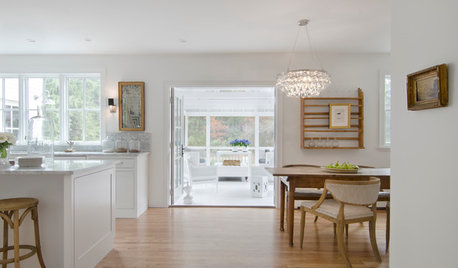
HOUZZ TOURSHouzz Tour: Modern Country Colonial Mixes Old and New
This renovated home embraces brightness, comfort and vintage charm
Full Story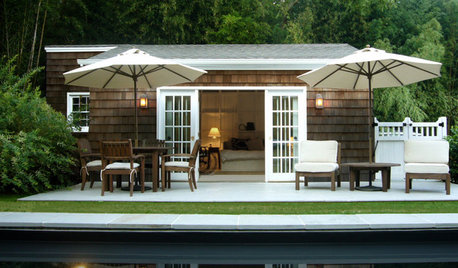
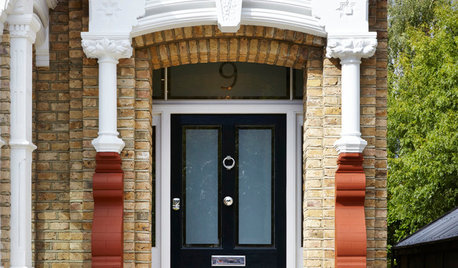
ECLECTIC HOMESHouzz Tour: A New House With a Grand Old Face
This Surrey, England, house looks for all the world like its late-Georgian neighbors, but it’s secretly newer. Much newer
Full Story
HOUZZ TOURSMy Houzz: Austin Family Breathes New Life Into an Old Bungalow
Homeowners brighten up their 1948 fixer-upper with new floors, marble countertops and so much more
Full Story
TRADITIONAL ARCHITECTUREHouzz Tour: Taking ‘Ye Olde’ Out of a Nantucket Shingle-Style Home
Vintage and modern pieces mix it up in a vacation house reconfigured to host casual gatherings of family and friends
Full Story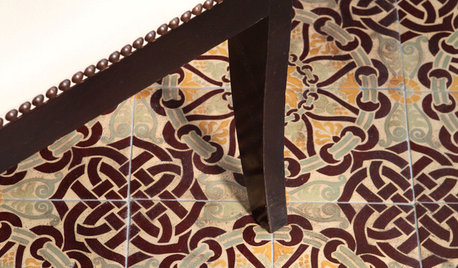
REMODELING GUIDESOld is New: Cement Tile Makes a Comeback
Get Ideas for Using Colorful Moorish-Inspired Tile at Home
Full Story
GARDENING GUIDES6 Captivating Roses for an Alluringly Fragrant Garden
Perfume your garden with aromas from richly spicy to lightly sweet, without sacrificing an inch of color
Full Story


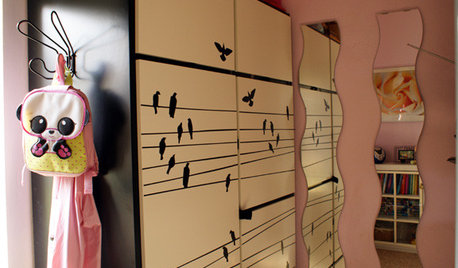
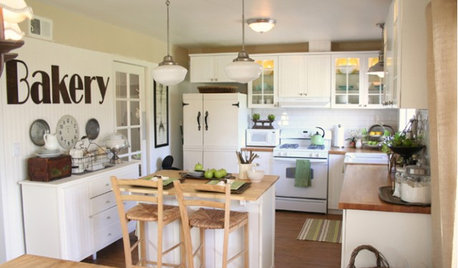


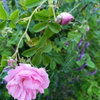

subk3